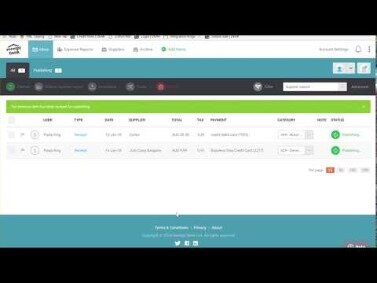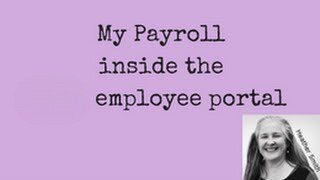
This process helps you monitor all of the cash inflows and outflows in your bank account. The reconciliation process also helps you identify fraud and other unauthorized cash transactions. As a result, it is critical for you to reconcile your bank account within a few days of receiving your bank statement. A bank reconciliation should be prepared periodically because it is an important part of the internal controls of a company. Usually, most companies prepare bank reconciliations at the end of each month.
ABC Co. can start from the adjusted bank book balance and adjust the timing differences to it to reach the bank statement balance. It can also adjust the balances to the bank statement to reach the adjusted bank book balances instead. Infrequent reconciliations make it difficult to address problems with fraud or errors when they first arise, as the needed information may not be readily available. Also, when transactions aren’t recorded promptly and bank fees and charges are applied, it can cause mismatches in the company’s accounting records.

And if you’re consistently seeing a discrepancy in accounts receivable between your balance sheet and your bank, you know you have a deeper issue to fix. D) to explain any difference between the depositor’s balance per books with the balance per bank. The third entry is to adjust the recording error for check 5386.
What is the Purpose of a Bank Reconciliation?
Or you could have written a NSF check (not sufficient funds) and recorded the amount normally in your books, without realizing there wasn’t insufficient balance and the check bounced. You only need to reconcile bank statements if you use the accrual method of accounting. This is to confirm that all uncleared bank transactions you recorded actually went through.
Accounting Seed’s Bank Direct Connect functionality connects you to more than 14,500 banks and credit card companies for fast batch import/match transactions. This unique interface lets you clear bank transactions and facilitate quick reconciliations through minimal data entry. Spot exceptions, manage bank errors, monitor for fraud, and maintain accurate cash balances at all times. Bank reconciliation done through accounting software is easier and error-free.
One is making a note in your cash book (faster to do, but less detailed), and the other is to prepare a bank reconciliation statement (takes longer, but more detailed). More importantly, bank reconciliation can play a crucial role in catching any fraudulent activity. Bank transactions are susceptible to fraud because it involves cash. For example, employees may exploit loopholes in the internal control of a company to their advantage. Therefore, bank reconciliation is the best option that companies have of detecting or sometimes detecting the error before it’s too late. Bank reconciliation statements are tools companies and accountants use to detect errors, omissions, and fraud in a financial account.
Step three: Recording the reconciliation
The purpose of a bank reconciliation is to safeguard the additions and inferences on the bank statement are likened (or reconciled) with the items that are entered in your company’s general ledger. When you look at your books, you want to know they reflect reality. This can also help you catch any bank service fees or interest income making sure your company’s cash balance is accurate. In short, how often a company should prepare bank reconciliations depends on the level of activity in its bank accounts. For companies with a high number of bank transactions, preparing it every month or, if possible, several times in a month is better. That is because it can help the company detect any irregularities easily and fix them on time.
Great care is necessary to record each debit card transaction into the accounting records, and appropriate approval and documentation can be problematic. When debit cards are used, the reconciliation process is often complicated because additional withdrawals will be discovered on the bank statement that still need to be recorded on the company records. The next step in the bank reconciliation process is to adjust unrecorded differences. As mentioned above, unrecorded differences require accounting treatment. Therefore, unrecorded differences will change the balance in the bank book of the company.
It is also recommended that they should carry out a bank reconciliation should at least every month if not any sooner. The company found that there are $300 bank charges, $250 interest Journal Entry Template Download Free Excel Template charges, and a $1,000 deposit by a customer, who didn’t notify ABC Co. of the deposit. Since these are all unrecorded differences, ABC Co. must record them in its accounting system.
Demonstration of a Bank Reconciliation
As mentioned above, timing differences do not require any adjustments in the bank book balance. Therefore, these items need to be part of the bank reconciliation statement only. For timing differences, the company must cancel out the effect of outstanding checks and deposits in transit. A bank reconciliation is a critical tool for managing your cash balance. Reconciling is the process of comparing the cash activity in your accounting records to the transactions in your bank statement.
- After adjusting the balances as per the bank and as per the books, the adjusted amounts should be the same.
- However, there is no need to worry and you should not be doubtful about why a bank reconciliation be prepared?
- Harold Averkamp (CPA, MBA) has worked as a university accounting instructor, accountant, and consultant for more than 25 years.
- In a small business, that responsibility usually falls to the owner (or a bookkeeper, if you hire one. If you don’t have a bookkeeper, check out Bench).
- At the bottom of your spreadsheet for February, add this note, tracking changes to your balance.
For example, say ABC Holding Co. recorded an ending balance of $500,000 on its records. However, its bank statement shows an ending balance of $520,000. After careful investigation, ABC Holding found that a vendor’s check for $20,000 hadn’t been presented to the bank. It also missed two $25 fees for service charges and non-sufficient funds (NSF) checks during the month. Outstanding checks are those that have been written and recorded in cash account of the business but have not yet cleared the bank account. This often happens when the checks are written in the last few days of the month.
Therefore, it can expense out the difference without any consideration to what may have caused it. On the other hand, deposits in transit are the opposite of outstanding checks. Deposit in transit refers to any checks that the company has received from another party, mostly customers. Deposits in transit are also checks that the company has presented to the bank, but the check did not clear before the preparation of the bank statement. A bank may charge an account maintenance fee, typically withdrawn and processed automatically from the bank account. When preparing a bank reconciliation statement, a journal entry is prepared to account for fees deducted.
Financial Statements:
Each of the bank accounts may appear to have money; but, it is illusionary, because there are numerous checks “floating” about that will hit and reduce the accounts. Somewhere in the process the perpetrator makes a cash withdrawal and then vanishes. That is why one will often see bank notices that deposited funds cannot be withdrawn for several days. Such restrictions are intended to make sure that a deposit clears the bank on which it is drawn before releasing those funds. Enhanced electronic clearing procedures adopted by banks have made kiting far more difficult to accomplish. Since the bank statement balance according to the bank reconciliation matches the bank balance in the bank statement, the reconciliation can be considered correct.
The change to the balance in your bank account will happen “naturally”—once the bank processes the outstanding transactions. This will ensure your unreconciled bank statements don’t pile up into an intimidating, time-consuming task. For the most part, how often you reconcile bank statements will depend on your volume of transactions. The balance recorded in your books (again, the cash account) and the balance in your bank account will rarely ever be exactly the same, even if you keep meticulous books. We’ll go over each step of the bank reconciliation process in more detail, but first—are your books up to date? If you’ve fallen behind on your bookkeeping, use our catch up bookkeeping guide to get back on track (or hire us to do your catch up bookkeeping for you).
Why a Chart of Accounts is Vital to Your Business’s Financial Health
We hope this article on what is a bank reconciliation would help you to manage your bank reconciliation process in a better way. A bank reconciliation declaration is a report ready periodically to check or safeguard that all of the bank’s dealings are recorded properly. This declaration records and plans the withdrawals, deposits, and any other transactions capable of affecting the bank account for a detailed period.
AccountingTools
If you notice this while reconciling your bank accounts, you can take measures to halt the fraud and recover your money. Bank reconciliation statements ensure that payments were processed and cash collections were deposited into the bank. Bank reconciliation statements are often used to catch simple errors, duplications, and accidental discrepancies. Some mistakes could adversely affect financial reporting and tax reporting.
This is done to confirm every item is accounted for and the ending balances match. Another possibility that may be causing problems is that the dates covered by the bank statement have changed, so that some items are included or excluded. This situation should only arise if someone at the company requested the bank to alter the closing date for the company’s bank account. The final entry is to record the bank service charges that are deducted by the bank but have not been recorded on the records.
Bank reconciliation accounting is a lot more in-depth than this sounds though. It can be tedious, even difficult to check all these records and calculations, and even still, nobody’s perfect. That being said, modern accounting software makes the process much easier. D) any differences between the company’s records and the bank’s records should be determined, and any errors made by either party should be discovered and corrected.

